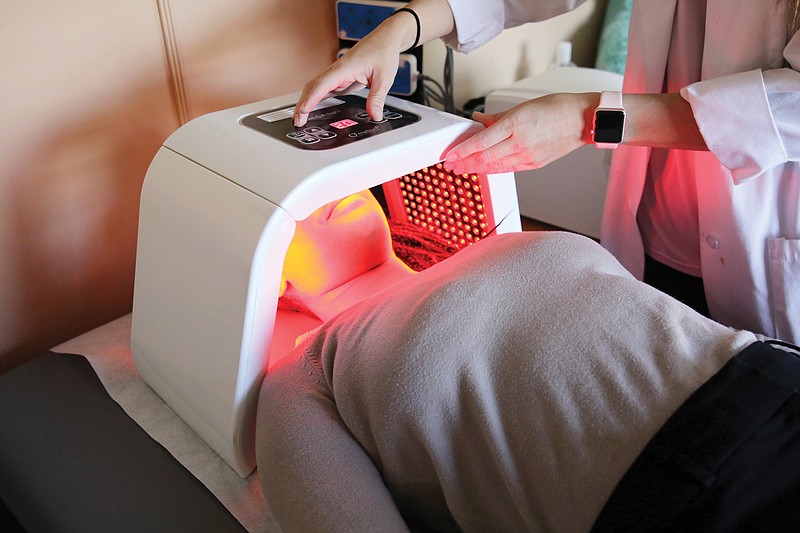Want to try it?
Red light therapy is offered at Chattanooga Wellness Natural Health Center by Dr. Shawn Jones. Visit chattanoogachiropractic.com or call 423-643-2277 to learn more.
Google "red light therapy" and you'll see images of light setups that look like they're part of a space mission, and glowing, atmospheric tanning bed lookalikes. You'll also see before-and-after pictures touting drastic wrinkle reduction and skin rejuvenation, and wounds transformed in record time.
Peppered among the images and host of headlines proclaiming "the benefits of red light therapy" are skeptical queries on whether the trending procedure really works.
Red light therapy purports to increase one's energy on the micro level to affect macro repair and healing, using low-level red light transmitted through lasers or LED lights. Among the issues RLT is said to address are weight loss, collagen production, scar treatment, wound healing, joint pain and muscle repair. RLT is also used to improve sleep, increase circulation, promote hair growth and boost antioxidant production, making it one of the most versatile treatments on the alternative health care market.
Having been explored only since the mid-1990s, a fair number of questions remain as to its effectiveness and the medical field is still very much divided on whether they believe RLT truly produces the host of advantages that it claims to. RLT lacks the extensive research needed to back up its claims, so the treatment is largely considered experimental. Some of its proposed uses have little to no support behind them at all.
Yet among practitioners, there is strongly held anecdotal evidence.
"My brother fell and put his hand through glass, severing an artery completely and three tendons," says local chiropractor and RLT practitioner Dr. Shawn Jones. "The doctors said it would be five to six months before he could move his fingers. Ten days later, he could move all five fingers."
Jones beamed an RLT laser through his brother's cast twice a day to speed the healing process, though it took another year of physical therapy after the cast was removed for his brother to regain full motion, Jones says.
RLT is said to stimulate production of adenosine triphosphate (ATP), which works as a catalyst to increase energy in cells. "Red light therapy supercharges the mitochondria," Jones explains, and this energy increase is supposed to promote a host of health benefits.
Various kinds of lights are used for the treatments. Lower-level LED lights can be purchased for home use with cosmetic purposes in mind. Small handheld RLT devices cost about $200, while larger lights that can cover more of the body at once are upwards of $700. Lasers, which work at a higher range and penetrate deeper into the body, are used in clinics only, usually for neuropathic purposes like muscle and nerve damage. Such lasers are commonly used in healing from car accidents or other major injuries and in conjunction with physical therapy.
"Red light laser therapy is the latest in treatment," says Jones. "It is safe and effective - no drugs, no surgery. It is used to heal tissue exponentially faster by stimulating the cells to heal and decreasing pain on the first treatment."
